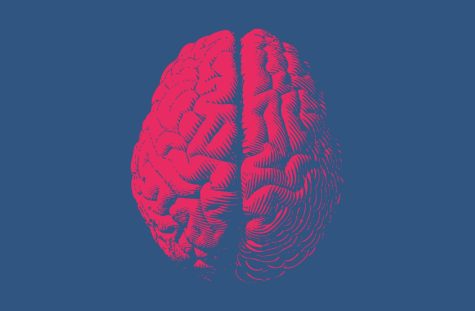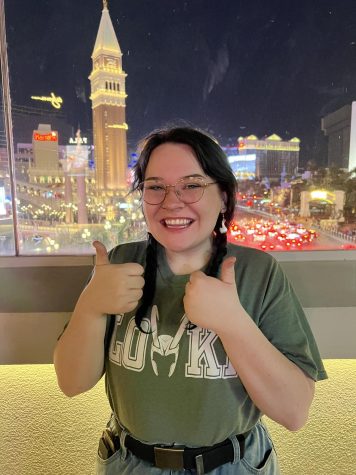That funny feeling: the science behind nostalgia
Feb 24, 2022
This article is the first installment of a two part series on nostalgia and media pandering. For part two, being released on Feb. 25, click here.
Nostalgia is often attributed to feelings of reverting back to the best version of your own past. It is felt when students come home on breaks from college, or when middle-aged mothers and fathers flip through their home scrapbooks from years ago. Popular examples include watching your favorite childhood cartoons or opening presents on Christmas morning; it is surely not hard to recognize the feelings now when they are described to you. We feel nostalgia looking at pictures of our elementary school classrooms or catching a whiff of our mother’s home cooking. Any of the five senses can prompt this feeling and it perpetuates thoughts quickly and efficiently. Many actively seek out nostalgia for the comfort it brings while others avoid any triggers of past memories.
Leading nostalgia psychologist Clay Routledge says that, to classify something as nostalgic, it must have three factors. First, a “social component” must be present like friends or family involvement. Second, a “personal meaning” or “autobiographical” thought must also be accessed. Lastly, the emotions triggered should be rooted in the long term past (from years to decades). That is why many of our fondest memories are from our childhoods; it is not only the time when our brains make the strongest connections but it is (generally) from the happier moments in our lives.
Undoubtedly, nostalgia is powerful, so powerful that it was deemed both a psychological disorder and case of demonic possession in the 17th century. The feeling has roots that reach back as far as humanity itself with people like Odysseus, who reminisced for comfort in ancient Greek fiction.
Scientifically, nostalgic feelings, similarly to happiness or sadness, are unavoidable chemical reactions in a person’s brain. Like many emotions, nostalgia has been dissected and studied by psychologists. Where joy triggers hormones like serotonin and dopamine, nostalgia creates a similar response in the mind.

“In peer reviewed papers it’s been reported that nostalgic experiences activate several regions of the brain, particularly the prefrontal cortex, limbic, paralimbic and midbrain areas,” Cristina de Balanzo, a researcher with Walnut Unlimited, stated in an article on nostalgia. “People who listen to music that evokes nostalgia experience greater activity in the inferior frontal gyrus, substantia nigra, cerebellum and insula than they do when listening to music that does not induce nostalgia.”
According to a study done in 2016 by Routledge, the impacts of nostalgia are present in fMRI brain scans. The study showed that, when a feeling of nostalgia was triggered, two areas of the brain were activated: the memory and the reward systems. He also goes on to say that nostalgia was used to treat home sick veterans because of the positive chemical reaction that happened. This was done through not only stimuli like sight and sound, but specifically smell which, according to Sigmund Freud, is “hardwired to emotion” because of its connection to the amygdala and the brain’s access to over 10,000 emotionally charged odors.
This study was shown to counteract the aforementioned soldiers’ cases of depression and homesickness. Research by neurologist Alan R. Hirsch shows that nostalgia purposefully filters out all negative feelings that were created in the moment we long for, making us as happy as possible. Hirsch also says that the memories themselves involved with nostalgia do not have an impact, instead suggesting the process is strictly emotional.
“Nostalgia made me feel that my life had roots and continuity,” Constantine Sedikides, a psychology professor in Southampton, England, says in a New York Times article. “It made me feel good about myself and my relationships. It provided a texture to my life and gave me strength to move forward. Nostalgia makes us a bit more human.”
“Like the unforeseeable future, the past itself is an idealized version of something we want it to be, not what we know as reality,” Lauren Martin said about the issue in Elite Daily.
Naturally, we crave this feeling because it gives us comfort in the happiness we knew we once had. Routledge says in his study that nostalgia comes with a “tinge of sadness or loss,” not because of the memories themselves but because we realize we can never return to that moment in time, no matter how happy it made us. Teenagers and young adults are more likely to experience nostalgia in the most influential times of their lives as well.
In 2021, 13 major films that hit theaters were reboots of past movies (examples include “Dolittle,” “Dune” and others). Classic television shows like “Gossip

Girl” and “iCarly” also saw a revival through streaming services and cable. In the music industry, sales of cassette players and vinyl record players have doubled since 2020 according to lifestyle writer Naomi Jamieson on the blog My Imperfect Life.
In fact, many of the most popular films of the last decade clearly play to our sense of nostalgia. “The Suicide Squad,” “Ghostbusters: Afterlife” and “West Side Story” are excellent examples of these ploys that alone came out just in 2021. Other examples from 2010 and later include “Ocean’s Eleven,” “Jumanji,” “The Mummy (2017)” and the list goes on. Popular shows like “Futurama” are getting a reboot, and the most loveable sea creature in Bikini Bottom, Patrick Star, is getting his own personal spin off to “Spongebob Squarepants.” In the music industry, popular songs from 2021 like “INDUSTRY BABY” by Lil Nas X and “Champagne Poetry” by Drake all have sampled beats from the past. And frankly, it is working.
“In a time when most marketing has tended to focus on the future, nostalgia transports us back to a simpler place where our current challenges do not matter and our memories serve as a comfort blanket and reminder of better times,” Balanzo stated. “So, if your brand is able to be part of this past and use it to create a nice memory to the present, then it should work as effectively as both positive past experiences or autobiographical memories can to enhance a brand’s personal relevance. Nostalgia brings a sense of familiarity which is always a nice way to connect with your audience as it acts as a social glue.”
People flock to these creations like moths to a lamp. The International Institute for Management and Development reported that 41 of the highest grossing movies of all time are either sequels or reboots; four-fifths of the highest grossing movies in 2017 were not original works and most of them grossed over a billion dollars. The curiosity of fans and critics alike will continue to make this segment of the film industry boom. Audiences love reboots, remakes and any way they can get their hands on nostalgia.
However, you can not blame the masses. Because nostalgia causes the same hormonal release as happiness, it can be addictive. Why not listen to music that makes you feel better or watch a movie that reminds you of past parts of your life? It should be—and it is—human nature to want to do so; it is an unavoidable mental process. For that exact reason, it generates exuberant amounts of revenue for those that cause and mass produce the said mental process. One of the best examples of this is the Spider-Man movies and the Marvel franchise as a whole.
Laken Kincaid is a sophomore Campus Editor from Beckley, West Virginia. They can be reached via email at lkincaid24@jcu.edu or through Twitter at @lakengkincaid.












